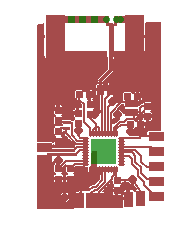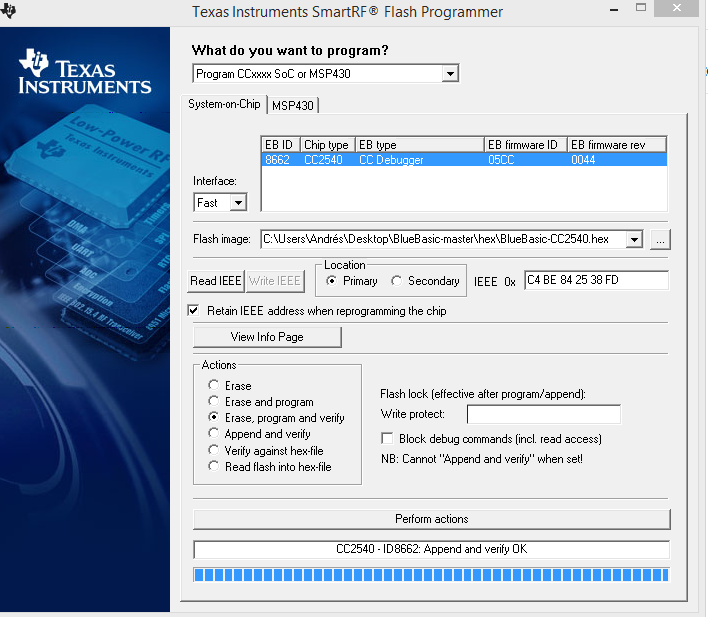Hello,
I am working about a minimal cc2540 configuration. I have designed this schematic for my project:
And I have designed the layout like this:
I have tried to connect this one to CCDebugger, and this is not recognized by the CCDebugger (always with red led).
By the way, I have another question, I have tried to program my firmware a commercial cc2540 module with a CCdebuger (with only VDD, GND, DC, DD, Reset), it is recognized and programmed correctly by IAR , but it doesn't show no name, when I scan it with a mobile phone. Can someone help me?
Thanks very much.





